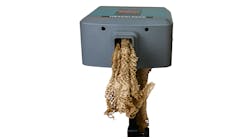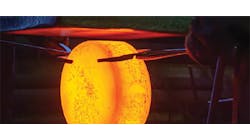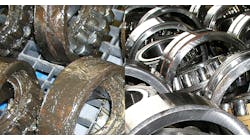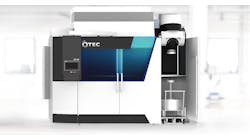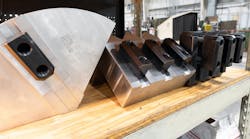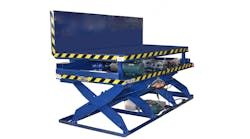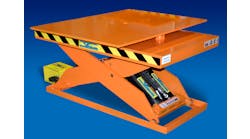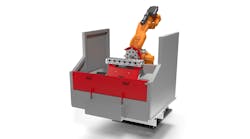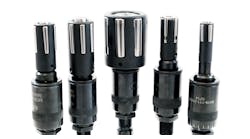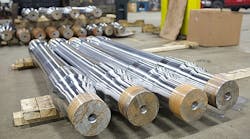Every forging operation has a wish-list of capital investments, the big ideas that plant executives and managers feel sure will improve competitiveness, increase marginal revenues, or expand market coverage. Consistently, according to the annual FORGING Business Outlook survey, forging professionals see finish machining as that difference-making big idea. In the latest survey results, 30% of forging professionals named finish machining technology among their current capital investment plans.
What do forging professionals know about machining technology? It’s not a trick question, because among the vast range of manufacturing technologies, CNC machining is arguably the most dynamic, drawing together advances from multiple scientific disciplines (materials science, process control, mechatronics, power and automation) to advance and redefine the capabilities of machine tool systems.
Dimensional control — Of course, a forging operation has its own needs and objectives, not the least of which will be choosing a CNC machine that will handle large forgings efficiently. Size, or rather, space is probably the first consideration. Two new gantry mills are due to be introduced to the U.S. market in September by machine-tool giant DMG Mori: the DMU 200 Gantry and DMU 340 Gantry represent new portfolio entries for DMG, and these two machines reportedly were developed specifically for the highly dynamic, "universal" applications necessary for machining or milling large components. Both models offer five-axis simultaneous machining on the largest work area, but within the smallest space requirement.
The DMU 200 Gantry combines functionality for machining of large components with maximized machine dynamics, both of which will improve users’ productivity when machining large aerospace, automotive, or energy-sector parts. With the five-axis machining at up to 30,000 rpm, and optional Ultrasonic or Lasertec technology integration, more complex components weighing up to 22,046 lbs in aluminium or composites can be machined economically.
The DMU 340 Gantry adopts a top-gantry design that makes for powerful and highly dynamic machining sequences that are also universally applicable. This new machining center is the result of close and detailed cooperative efforts with the large-component manufacturers in aerospace and mechanical engineering sectors. The work area of the DMU 340 Gantry measures 134 x 110 x 49 in., and provides expansion options to up to 236 in. in the X- and 59 in. in the Z-axis. Due to its gantry design, it also has compact dimensions.
Another new gantry mill possibility is the FZU five-axis milling machine introduced late last year by Zimmerman. This is machine is described as “compact,” with a thermo-symmetrical design.
“We can narrow down the special features of this gantry machine to three main characteristics,” according to Frieder Gänzle, general manager. “We are following the trend towards modern manufacturing machines and designing them as space-saving, pre-assembled units.” Zimmermann assembles the machines in-house and then ships them to the customer without dismantling them. Onsite, they are ready for use after a short commissioning time.
The next point is “thermo-symmetrical” design, meaning that that the milling spindle, guides and other accuracy-determining components are arranged so that any heat generated during operation is compensated, or that the system’s structural elements are able to expand in “uncritical” directions.
The last point involves Zimmerman’s new VH10 milling head, which achieves very high power-density. “This new development has enabled us to reassess our portfolio,” Gänzle reported.
The slender design means that the VH10 spindle head has only minimal interference contours. It achieves almost double the clamping force of its predecessor, offering more stability in operation. To minimize throughput times, a 34-kW spindle (max. speed, 24,000 rpm) is the standard.
Users will benefit from the fact that Zimmermann has spare heads in stock and can supply them on request in the event of stoppages. “We strive to respond quickly and provide the customer with optimum support,” emphasizes Gänzle.
If machining large-dimension parts is the objective, forgers might consider a “bridge mill”: Absolute Machine Tools Inc. is offering a new, double-column moving table bridge mill. The Johnford DMC LH Series brings high-volume production capability and affordability to large part machining. The work envelope is 110/122 in. (2,800/3,100 mm) in Y; 122/244 in. (3,100/6,100 mm) in X; in 39.4in. (1 meter) increments. The standard Z-axis travel is 32 in., and optionally to 42 to 60 in.
These bridge mills have a long, Meehanite® iron base with full support of the table over the full X axis travel, so it’s possible to machine exceptionally high loads. The Y and Z axes hold fixed loads at all times, while the X-axis carries the only dynamic load: this allows the operators to achieve very tight machining tolerances at high speeds.
In this bridge mill design, spindle centerline-to-column distance is minimized to improve rigidity even further. Finite Element Analysis (FEA) is used to design each bridge mill, simulating real-world conditions, including vibration, heat, fluid flow and other physical impacts.
Another machine due to debut in the coming weeks is JTEKT Toyoda Americas’ five-axis Stealth VB215 vertical machining center for heavy cutting. With a solid-iron headstock and vibration-dampening technology, the Stealth VB215 has a compact Z-axis ram construction that supports the 6,000-RPM high-performance geared-head spindle, for stability in milling and drilling.
Tending business — Machines scaled to finish large workpieces are not the only consideration that forgers will consider: machine tending, or automation, is a factor that bears directly on the productivity that the operators may project for their capital investment.
Hermle Machine Co. has introduced its C 650 machine series in North America, an affordable but high-performance, five-axis machine center. The C 650 is an extension to the Hermle Performance Line (C 250, C 400, and now the C 650), with a mineral-cast bed and a swiveling rotary table can accommodate workpieces up to 1500 kg / 900x600 mm, for highly precise machining.
The traverse path in the stainless-steel-clad working area is 1050x900x600 mm, with a vertical table clearance of 775 mm and a door aperture of 1,050 mm, all of which mean crane-charging for heavy or oversized parts is simple and safe for operators, materials, and equipment.
Set-up and automation is simple too: The C 650 has an integrated tool magazine for 42 tools. Two additional magazines with 50 or 88 extra magazine pockets are available as options. The control panel of the C 650 is also designed to swivel easily to the magazine loading location, so the operator can enter the tool data directly into the tool table in the control system. The 200-mm high platform, adapted to the loading point, puts the operator in an optimal, ergonomic position to load and unload the tools.
The C 650 is programmed and controlled through a 19-in. touchscreen color monitor. Optionally, the C 650 can be equipped with an ergonomically adjustable control panel, giving the operator support for managing all kinds of milling operations.
The last point reveals the constant concern of any machine operator: know-how. Forgers seeking to adopt machine tools will need to avail themselves of the expertise that machine designers incorporate to their products. There is plenty of that available.
